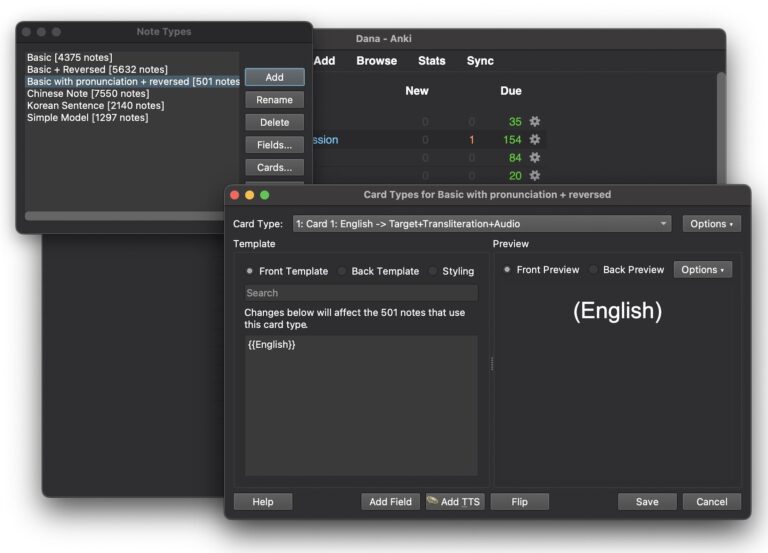My Complete Guide on How to Learn Chinese (Mandarin) — from Scratch
I learned Chinese just as apps were making it easier. But this is a guide to how I’d learn Chinese again if I were doing it from scratch.
This post may contain affiliate links. Please see our disclosure policy for details.
Many years ago, I learned Chinese. It’s one of the things I’m most proud of. I got to an advanced level and could do all my personal and professional things in Mandarin.
But if I were starting to learn Chinese again today, I’d learn it differently.
Whenever someone asks me how to get started learning Chinese, I don’t tell them what I did. I give them advice on learning Chinese in this article!
By the way, I might refer to “Chinese”, but I’m writing about Mandarin, or pǔtōnghuà (普通话) or guóyǔ (国语) depending on where you’re from. (More discussion on this in my article “Being and Speaking Chinese“.)
In Mandarin got to the point where I could read and listen to the news and conduct job interviews (both as a job seeker and as a manager) — at least when it was necessary (often not with highly educated people working in international organisations).
You might also like the following articles on Chinese…

Chinese was the fifth language I learned, so I thought I knew about learning languages. Unfortunately, prior to Chinese, every language I had studied before was somewhat familiar to me.
European languages were familiar to me because my entire life and education were in English. Middle Eastern languages were familiar because my mother tongue is Persian (Farsi), so the pronunciation and lots of words were easy.
So I was wrong — I did not know about learning Chinese. Even as an experienced language learner, the methods I used to learn Chinese initially were not the most effective. If I were to learn Chinese again from scratch, I’d follow a very different approach. This is what I’d do.
Become a Discoverer
Like this guide to learning Chinese? Join our mailing list. Explore the world through the lens of language, culture, and guides to living in distant destinations.
Summary — How I’d learn Chinese again if I started from scratch
These are the steps I’d follow.
- Learn the PinYin pronunciation system. Learn how to pronounce all the sounds, including the tones and unusual consonants, and how they go together.
- Learn 1-200 basic words (without characters) and get the pronunciation perfect. Do this by listening to recordings, and preferably with a teacher.
- Learn the basic grammar rules, including word order, questions, statements, and using the various particles/conjunctions.
- Start building a vocabulary of 500 words including characters using the HSK flashcard decks on Anki, or using Skritter.
- Get a great tutor — someone who has studied the specific science of teaching Chinese. Expect to spend upward of 200 rmb/hour. Start speaking, reading, writing.
More detail on these steps below.
Step 1: Learn the PinYin pronunciation system
The PinYin pronunciation system is what Chinese kids use in school to learn how to pronounce words, and how pronunciation is explained in dictionaries (at least learner ones).
It makes phrases like this:
- 我把我的电脑放在桌子上了
into this:
- wǒ bǎ wǒ de diànnǎo fàng zài zhuōzi shàngle
The pronunciation of Mandarin Chinese is almost completely standardised (well, there might be exceptions or irregularities, but they’re in the minority). Every character has one standard pronunciation.
In a few (but very commonly occurring) cases, a character might change tone depending on the tone of the character coming after it. It always helps it “flow” better. The only two characters I can think of are the ones for “a” (一, usually yī, but sometimes yí), and “not” (不), which is usually bù but sometimes bú.
In rare cases, a character might have two pronunciations, but those are recognised oddities in Chinese called a “多音字” (“multi-sound-character”), as opposed any other character which doesn’t have a name. It’s like how in English you know when a word has multiple meanings, e.g. like how a “date” is both a night out and a sweet fruit.

In a nutshell, the pinyin system works like this:
- There are a bunch of consonant “initials“, followed by “finals” that are vowels and consonants.
- Most initial letters are pronounced as they would be in English or another Latin language. Exceptions include:
- x (same as in Xi Jin Ping) is pronounced like a thinly-aspirated “sh”
- q is pronounced like a sharp “ch”
- zh is pronounced like a heavy “ch”
- c is pronounced like “ts”
- Most final elements are also intuitively pronounced — but the sounds might be unfamiliar to you if this is your first language other than English. A few of the unfamiliar ones are
- Double vowels like ie and ia: think of these as pronouncing both vowels, but quickly in succession as one syllable.
- Finals ending in ng like iang: These have a swallowed ng sound, like in being.
- The vowel a which generally comes out more like e as in “bed” to my ear.
- There are four tones (plus neutral), represented by a stroke on the first vowel of the final. For example
- mā is first tone, and so the whole character is pronounced with a high pitched tone.
- má is second tone, and the whole character is a rising tone.
- mǎ is third tone, and the whole character is falling-rising
- mà is fourth tone, and the whole character is falling in tone (briefly)
- ma is neutral.
This was a pretty good resource in understanding the Pinyin tonal system. But most courses will explain it.
To answer the question posed by most students trying to learn Chinese: No, it’s unlikely Chinese will ever be simplified to just pinyin, doing away with characters.
(This is one thing I answered in my brief summary of Chinese language facts.)
The reason Pinyin won’t replace characters this isn’t stubbornness or bloody-mindedness. It’s for the reason that knowing characters helps you understand and learn Chinese a lot more quickly after a certain point.
Languages like Korean, Vietnamese, and Japanese (when using hiragana/katakana) lose a lot of meaning due to having transitioned to phonetic spellings.
In Chinese, it’s easy to remember new words because so many are related. If you know the character for person (人), you’ll easily make connections to:
- 私人: secret. Literally: secret person
- 工人: worker. Literally: work person
- 客人: guest. Literally: guest person
- 情人: lover. Literally: affection person
And in addition, there are all the characters that have the person “component” in them (can you see them?):
- 队: a team/group
- 众: a crowd (three’s a crowd!)
- 认: to know
Even if the connections aren’t obvious, it’s a mental association you can make and that helps you remember.
Step 2: Learn 1-200 Basic Words, and understand Chinese etymology
This might seem tedious but I totally recommend building a basic vocabulary before going anywhere with Chinese. More importantly, you have to learn the etymology of common words, and the system of etymology that Chinese uses.
First, learn a few greetings. But then immediately get to memorizing everyday words, like apple, fridge, car, sun, and brother.
For example, it’s important to learn Chinese etymological concepts like
- Most words in Mandarin Chinese are two-character words. Particles are often one character, and there are of course many three-character words, but the vast majority are two characters.
- Words inter-relate by sharing characters and radicals. For example, “apple” is 苹果. “Fruit” is 水果, sharing the same character 果 (fruit) with “apple”. “Steamed dumpling” is 水饺, sharing the same 水 (water) character as fruit. And so on.
- Words also relate by sharing radicals (the components that make characters). These lend shared meaning as well as similar pronunciation… sometimes. For example a 龙 is “dragon”, and a 笼 is “basket”. Unrelated words, but they both sound “long2”. The same radical is also in 庞, which means “huge” but the pronunciation is different (“pang2”). Go figure!
That’s just a snapshot. Lots of the “rules” are really guidelines, and so aren’t formally taught. A teacher will just tell you to look out for them, so you can guess the meaning of words and how they’re pronounced.
I suggest acquiring a basic vocabulary for any language where the vocabulary is totally foreign to you. This applies when learning Asian or Middle Eastern languages where (unless you know another already) you don’t have a good reference concept.
One of my favourite tools I used to learn Chinese vocabulary and writing is Skritter. I’ve been using it since 2011, before everyone even had touch phones (and before they had an app). Now that they have an app… it’s magic.
(Here’s my full review of using Skritter to learn a language.)
Step 3: Learn the Basic Chinese Grammar Rules
People like to often say that Chinese has no grammar, but this is a huge misunderstanding.
Chinese definitely has simpler grammar than many languages. For example
- Chinese nouns don’t have grammatical gender (objects being male, female, neuter etc.), unlike most languages
- Chinese nouns don’t have case endings, unlike Arabic, German or Russian
- Chinese verbs don’t conjugate for person or time, unlike Arabic, German, French, Spanish, Swahili or many other languages
- Chinese sentence order is subject – verb – object, just like English, making it intuitive to learn
But that said, Chinese is used to express things just as complex as any other language. And there are rules defining it.
The most important parts of Chinese grammar to learn as a beginner are the following:
Chinese Pronouns
Pretty much the first Chinese grammar you need is pronouns. This is just so you can say “My name is Wolfgang” or whatever.
In Chinese, there are four basic pronouns. They don’t affect verbs or anything else. You modify the three to make plural forms by adding one more character.
- I/me: 我 (wo3)
- You: 你 (ni3)
- You (formal): 您 (nin2)
- He/She: 他/她/它 (all pronounced ta1)
In plural form, you add 们 to the end.
- We: 我们: (wo3men2)
- You plural: 你们 (ni3men2)
- You plural (formal): 您们 (nin2men2) — used rarely, but it does exist
- They: 他们/她们 (ta1men)
A note on the “formal you”. If you’re a young person (say, under 30), you’ll rarely hear this. You may also have only occasional interactions with older or well-respected people, so you’ll use it rarely.
You also don’t have to use the formal “you”. But it helps grease the wheels when talking to
- A bank manager, say when you’re trying to do something complicated (everything was complicated in China! I was just trying to transfer money but it was a mission every time)
- A new client or boss
- An old person, e.g. an older Didi driver
To learn Chinese is to learn Chinese culture; you should expect that a lot of culture is reflected in the language. You learn them alongside each other.
Chinese Statement Sentence Order
As I mentioned above, Chinese sentence order is subject-verb-object. Luckily, this is the same sentence order as English!
This means that to say “I want an apple” you write “I + want + an + apple”, which translates to “我 + 要 + 一个 + 苹果” (adding in the + symbols just to show the separation between words).
There’s a slightly more complex but extremely common sentence order that you should learn, involving 把 (ba3).
The character 把 means “to hold”. But it’s used in sentences like “I put the book on the table”. To write this, you write “I + 把 + book + put + table + on top”.
More than anything, the fact that this sentence structure is so common indicates that there are more complex sentence structures out there. Just be ready for them!
Chinese Question Sentence Order
In basic conversation, you ask people questions, and they give answers.
So the second thing you have to learn in Chinese grammar is how to ask questions.
There are three basic Chinese question sentence structures.
- Using a question word. For example “Why don’t you want to eat food?”. In this sentence, you start the sentence with “why” (为什么) and that’s enough. “你为什么不要吃饭?”
- Using the 吗 (ma) particle. You can end a phrase with this particle and a phrase becomes a question. For example, “You don’t want to eat?” becomes “你不要吃饭吗?”. Not using the 吗 makes it sound unnatural, like a weird statement, or an unfinished phrase. “You do not want to eat!”
- Using the “verb-not-verb” structure. Think of this like “want/not want”, as an option. “Do you want to eat?” translates to “you want-not-want eat?” or “你要不要吃饭?”
The third one (verb-not-verb) trips people up a lot. You don’t have to use it. But you have to understand it. It’s very common, particularly in the “is-not-is” structure.
Like “You’re American, aren’t you?” would often be asked as “你是不是美国人?” which means “You are-not-are American?”
Each question structure has a slightly different feeling to it. They might be interrogating out of curiosity, confirming a suspicion, or expressing doubt. Those subtleties aren’t important at the early stage. You can express them with tone, and learn them over time.
Step 4: Start building a basic vocabulary
You need a vocabulary before you can speak to anyone — at least a basic one.
When you learn Chinese you need to acquire two kinds of vocabulary: characters and words. Most words are 1-2 characters.
You might ask “should I focus on characters or words? Or should I learn words first and characters later?”
In the early stages of learning Chinese, there’s nothing you can do wrong, and everything is hard. Honestly if you drill characters and remember you can’t find remember words, then you can drill words later. If you realise you can remember how to say words but can’t remember when hearing them, you can drill that later too. Constantly vary your style according to your weakness.
My favourite two tools to build vocabulary are Anki and Skritter.
Anki is a free flashcard program for your computer. It’s a little clunky, but the advantage is that you can get lots of free decks online.
Here’s how you can use Anki to learn Chinese:
- Look at our guide to setting up Anki as a first-time user. Download the app, and set it up, set it to dark mode or whatever you prefer.
- Then, go download a deck to learn Chinese from. Here’s my favourite one — it used to be free, and now costs a whopping $2 (yes, two dollars) for a rich deck with thousands of cards in Chinese and English with Pinyin and even audio. It’s the best language-learning $2 you’ll ever spend. (If you can’t spend the $2 for some reason, there are some other great free decks to start with on the Ankiweb website.)
- Set up your learning schedule to add 10 new cards a day.
Now start learning!
My second favourite tool for learning vocabulary — second because it costs so much — is Skritter.
Skritter got me to learning not just to read, but to write over 2,500 characters at my heyday. (I’ve forgotten a lot since then!)
The major advantage Skritter (that’s the review I wrote) has is that it teaches you how to write characters in the correct stroke order. I suggest doing Anki first, learning how to read a bunch of characters, and then after a month or two getting Skritter.
Step 5: Get a great Chinese tutor

《道所存者,乃师所存者》
Tang dynasty proverb
“If one has grasped the way, then take him as your teacher”
You can definitely teach yourself a lot. In fact, up to the point of learning a few hundred words of any language, I think it’s more practical to teach yourself.
But at a certain point in any endeavour, a good teacher will be able to guide you more quickly and correct your early mistakes.
You can read our guide on getting the most out of italki here. Or you can sign up with the link below to get some free credits.
Get $5 in italki credits — enough for a trial class!
Get a tutor online for as little as $4/lesson from italki with $5 in credits after your first purchase of $20 of credits.
If there’s one thing I could go back in time and do to learn Chinese faster, it would be to invest more in finding the right teacher earlier.
You need to find a good Chinese teacher who can teach you the things you need to know (not what you want to know).
A bad Chinese teacher will do one of two wrong things
- ❌ A bad Chinese teacher will teach you whatever you want. This is bad because you likely don’t know what’s best for you. For example, you might say “I don’t want to learn characters”. A bad teacher would let you get away with this for too long, and I can almost guarantee you’ll regret it once you’re past the beginning states.
- ❌ A bad Chinese teacher will teach you what they want or find easy to teach. A bad (usually cheap) teacher just works out of a book they have and teaches you in the way they feel comfortable, not adapting to your needs, pace, and style.
A GOOD Chinese teacher will teach you things you want to learn, while making sure you learn the things you need to learn.
Learning Chinese is a long process, so it’s a little harder to do online. The pros outweigh the cons, though. The main pros are that
- You don’t have to go anywhere (important in the age of lockdowns and limited socialisation)
- You can easily find good teachers. Online teachers mostly have decent teachers. And the best-rated ones are, of course, great (or sometimes just really nice, and occasionally attractive women)







Always great to hear from a fellow Chinese language learner. Good stuff!
Thanks for sharing.
I faced many difficulties when I studied Chinese, especially for pronunciation, and I tried to get methods overcoming it, such as read Chinese newspaper, watch Chinese videos. Nevertheless, it doesn’t make much sense. Until I found a 1-1 course, I communicate with native Chinese tutor directly and I can get direct answer of any question met when I am studying Chinese.